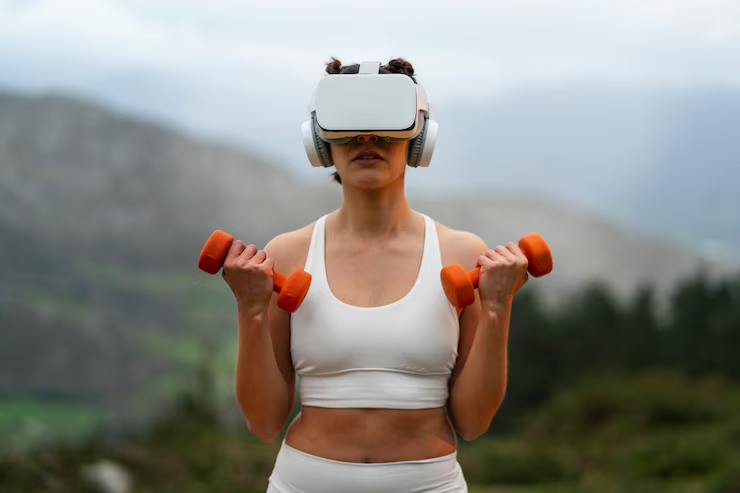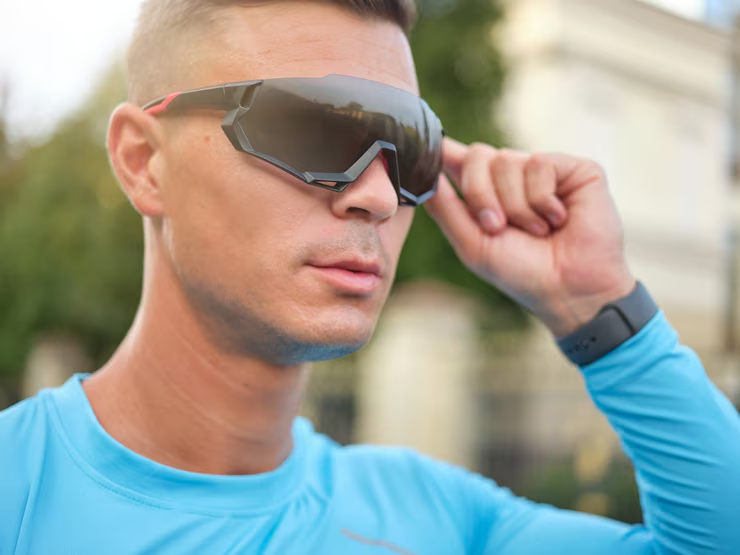Athletic smart glasses promised to change everything about training and performance tracking, though reality turned out much messier than the slick marketing campaigns suggested.
These devices try solving the age-old problem of accessing workout data without constantly checking phones or watches during exercise, but wearing computers on your face during intense physical activity creates problems that nobody talks about in promotional videos.
Sweat gets trapped behind lenses, displays fog up during cold weather, and the things slip around constantly during any movement more vigorous than casual walking.

Getting these gadgets to work properly during real workouts involves way more complications than manufacturers admit, especially when dealing with sweat, impacts, weather changes, and the rapid movements that make sports actually challenging.
Athletes quickly discover huge gaps between those perfect demonstration videos and what happens when you’re actually pushing yourself hard during training.
Even simple stuff gets complicated – like trying to switch from intense workout tracking to casual entertainment during recovery, whether checking social media or accessing platforms like ToonieBet casino for some downtime relaxation, highlights how these devices struggle with the different contexts athletes actually experience throughout their day.
Getting Real Performance Data That Actually Helps
Sports-focused smart glasses pack GPS, accelerometers, heart rate sensors, and other tracking tech that promises comprehensive performance monitoring without strapping devices to wrists that might interfere with certain movements.
Running apps display pace, distance, and route info directly in your vision field, eliminating those annoying mid-run phone checks that break rhythm and concentration. However, outdoor brightness makes displays nearly invisible half the time, despite companies claiming their screens work perfectly in direct sunlight.
Cycling applications work better since they integrate with existing bike computers and provide turn-by-turn navigation while keeping eyes on the road instead of dangerous downward glances at handlebar-mounted devices.
The hands-free aspect genuinely improves safety compared to traditional cycling computers that require looking away from traffic. Unfortunately, wind and road vibration mess with device stability and display clarity during longer rides, especially on rough surfaces or high-speed descents where you need information most.
Training Features That Sound Better Than They Work
Virtual coaching through motion analysis promises real-time form correction and technique feedback that identifies problems during exercise performance before they become injuries.
Running gait analysis provides immediate feedback about stride patterns and foot strikes that theoretically help improve efficiency, though accuracy varies wildly based on calibration, lighting conditions, and individual movement quirks that don’t match algorithmic expectations.
Strength training apps try to count reps and check your form using sensors and cameras, but they often can’t handle the complexity of weightlifting well.
Simple exercises like push-ups might work fine, but more complicated moves that use many muscles often give confusing or wrong feedback, which can be frustrating for users expecting accurate help.
These apps do offer personalized workout plans based on your fitness level and progress, helping you stay on track without paying for a trainer. Still, they can’t replace the motivation and safety advice that a real trainer provides—especially for beginners who need human help the most.
Remote coaching integration allows trainers to monitor athlete performance from distant locations while providing real-time feedback during sessions.
This capability benefits athletes in areas lacking specialized coaching expertise, though data transmission problems and connectivity failures create frustrating interruptions during critical training moments when guidance matters most.
Real-World Problems Nobody Mentions
Comfort during extended wear becomes a major issue once sweating starts and movement intensity increases beyond gentle jogging or casual cycling.
Standard eyewear retention systems fail completely during vigorous activity, requiring specialized straps that feel restrictive and uncomfortable during natural movement patterns that serious training demands.
Battery life causes worry during long workouts or multi-day events when charging isn’t easy or possible. Most devices need charging every day with normal use, and GPS tracking during marathon training can drain batteries in just a few hours. This leaves athletes without important performance data when they need it most.
Durability means more than just being water-resistant. Devices also have to handle sweat, extreme temperatures, and physical stress that happen during real training. Many consumer devices aren’t built for tough conditions and break early, making replacement costs add up faster than the benefits they provide.
Different sports communities feel differently about using technology. Some welcome digital devices as helpful tools, while others see them as distractions that take away from focusing on the sport itself.
In many team sports, electronic devices are not allowed during games, so they can only be used for training, which makes their overall usefulness smaller.
Money Versus Actual Benefits
Premium sports smart glasses cost several hundred to over a thousand dollars, placing them alongside high-end training equipment rather than casual fitness accessories.
This investment must produce measurable performance improvements or training efficiency gains that exceed costs of proven alternatives like dedicated sports watches or smartphone applications that actually work reliably.
Repair and replacement expenses add ongoing costs that casual fitness enthusiasts never anticipate, particularly given harsh operating environments that exceed normal electronics usage patterns.
Insurance rarely covers damage from athletic use that manufacturers consider beyond warranty protection, leaving users responsible for expensive replacements.
Alternative solutions including smartwatches, fitness trackers, and phone apps often provide similar functionality at lower costs with better durability and longer battery life.
These established platforms benefit from larger user communities, extensive app ecosystems, and broader compatibility with existing fitness equipment and training platforms that actually matter for serious athletes.
Professional adoption remains limited despite manufacturer sponsorships and promotional partnerships, suggesting performance benefits don’t justify practical complications for competitive training.
Recreational athletes should question whether novelty factors outweigh substantial costs and limitations that characterize current smart glasses technology.
Investment decisions depend on training priorities, technology comfort levels, and willingness to accept current limitations while hoping future improvements enhance utility and reduce costs eventually.


